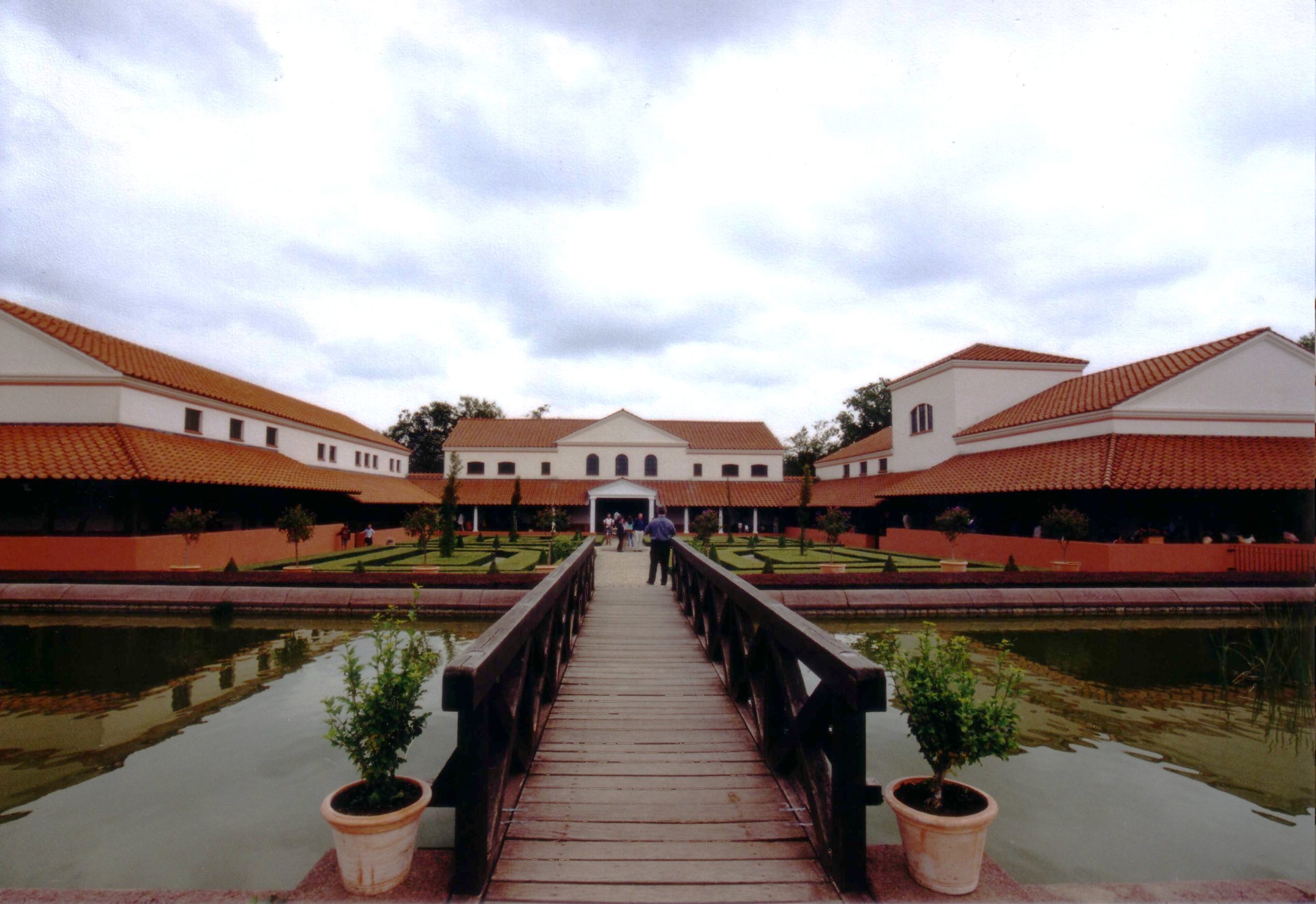
Birgitta Hoffmann
After spending a year looking at the amazing estate centres in the Mediterranean, 10 weeks talking about the villas in Gaul and Germany might seem somewhat of a letdown. So why do it? For starters, they are by far the most common Roman site type in the area and the closest parallels to the villas we find in Roman Britain. The rural farm with its yard and little bath house is for much of Gaul the definition of what it means to be living in the Roman NW provinces.
And like the farms in the American Midwest, there is at times a certain repetitiveness in their design and aspirations. But they also document, how Rome transformed and frankly reconstructed the Iron Age landscapes after the wars of Julius Caesar and later the Civil War of the 69/70 CE. The result are thriving landscapes in the hinterland of Gall0-Roman Towns and later Roman forts.
The joy of these is, however, the diversity and the variety of research that has been conducted on them. Every region has their own idea of what a villa estate should look like, which might reflect the type of agriculture that was practised and perhaps even more interesting is the question how fast you see the development of different levels of wealth. The picture is the reconstruction of the Roman villa of Borg in Germany. It is without a doubt the villa of a member of the financial elite, but it comes from the area of the Treveri, where you see these large villas quite early, so where does the money come from? And who are the owners? In the territory of the Helvetii (in modern Switzerland), you have a landscape that was evacuated in the late Iron Age and then resettled leading to some villas that are best described as palaces or the centre of a small town, rather than a rural site, but there are plenty of pointers that suggest that in many cases these large villas were in the hands of the local elite and increasingly we find that these sites continue Iron Age settlements.
But we also find areas like Cologne where many of the villas may have been in the hands of retired Roman soldiers (who at this point are likely to have been born in Northern Italy and the South of France). How does this differ from the ‘Romanised villas’ in Switzerland? And are there local people who refuse to live with underfloor heating and mosaics and why?
It is not surprising that these 200-year-long traditions of rural living come in many areas to an abrupt halt during the third century. The surviving sites change, but how do you continue to farm in the face of an unpredictable military and political situation and if you are one of the lucky rich ones, who may be working closely with the court at Trier, how do you adapt your villa to document this in the face of your neighbours?
As you can see, a lot of material and questions to cover and as to mosaics and the art – let’s just say, it is amazing what can survive a long way from Rome.
If you are interested, you can find further details about the course here.